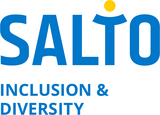Preparation: needs assessment
Starting from the participant's needs
Involving participant's at the start of your project has two major benefits: one, it will help a worker gain the participant's trust and two, through skills and knowledge gained, it will help improve the confidence and self esteem of all those involved by creating a sense of ownership and responsibility for the planning, implementation and evaluation processes.
A successful project will be dependant on participant's needs being taken into account. A key step in achieving this is Needs Assessment:identifying the needs, hopes and aspirations of participants.
Needs Assessment: key outcomes
- Identify individual and community needs, concerns and issues
- Empower grass-roots action around needs
- Determine if needs have changed
- Gather individual's and communities' hopes, dreams and desires
There are a number of ways a Needs Assessment can be facilitated, these include:
- Focus Group Interview
- Public Issues Fora
- Secondary Data Analysis
- Surveys and Questionnaire
- Interviews
- Mapping
^^ top ^^
All of the above methods are useful as a means to gathering information. However, in considering Hart's Ladder of Participation, in terms of maximum participation (and therefore a high sense of ownership and control of the process) Mapping (also known as Participatory Action Research) is recommended as the method most likely to put participants at the heart of the process.
Participatory action research is based on a view that people are the experts on their own lives and therefore they are the best starting point for any planning or action process.
The approach aims to include members of society that are often excluded from decision making processes; young people, minority ethnic groups, people with special needs, people from the most disadvantaged areas (rural and urban).
^^ top ^^
Participatory action research is a key first step in planning for change.
- It allows contrasting views and individual values to be discussed and does not set "quantity" as the only positive outcome or indicator of performance or success.
- It seeks diversity, recognising that people's lives and ideas are different and complex.
- It encourages group work to enable discussion and expressions of difference.
- It empowers people to control the process and set their own agenda.
> Adapted from: Susman, G. I., "Action Research: A Sociotechnical Systems Perspective," ed. G. Morgan (London: Sage Publications, 1983) 102.
Participatory action research has three key stages:
- Identifying or defining the problem or need - mapping
- Considering and taking action to address the problem or need - action
- Evaluating the outcomes (learning and development) of the action taken to address the problem or need - evaluation
As you can see from the diagram it is a continuous process, according to the situation individual's needs and desires change. To be effective you will need to return to the process throughout your project.
> Want to know more? For further information and a step by step guide, click here.
^^ top ^^
 PAR
PAR
